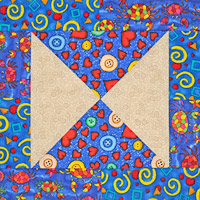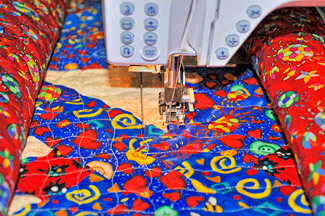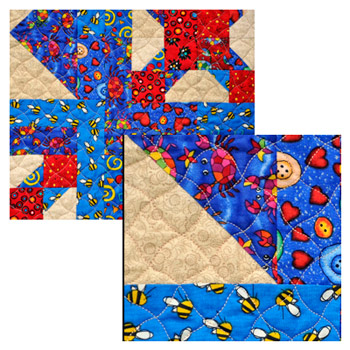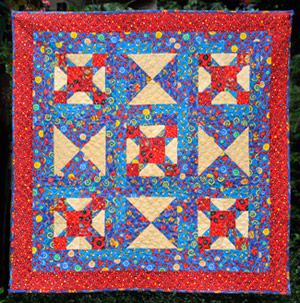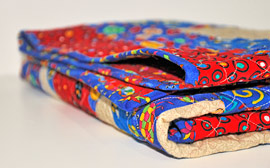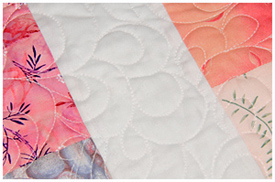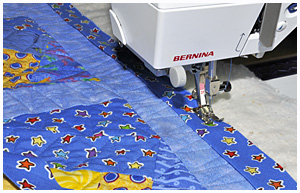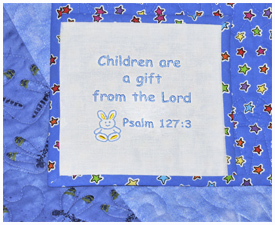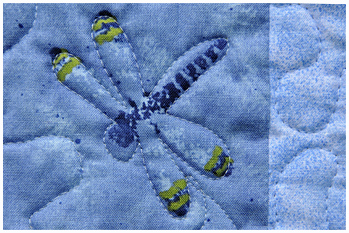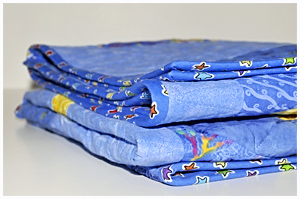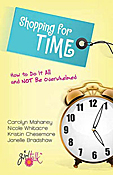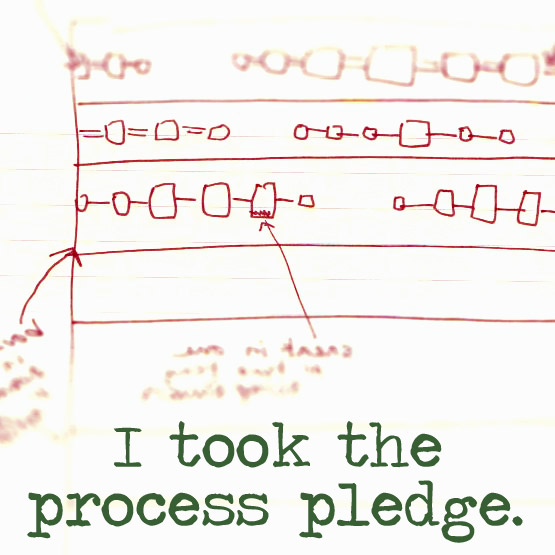
Our quilt tops are complete, our quilt sandwiches are prepared, and now we’re ready to begin machine quilting. If you haven’t already, take a few minutes to read about the walking foot attachment (even feed foot) that is available for your sewing machines. This tutorial explains basic machine quilting using a straight stitch with the feed dogs in the up position.
The first thing I do is set out my quilting supplies. There are many helpful, time-saving quilting aides on the market that you can explore. For beginners, all you need are a few basic items. These include 100% cotton thread (or other quilting thread of choice), quilting gloves or rubber finger tips, quilt markers, machine quilting needles, embroidery scissors or thread clippers, and a music CD.

Quilting Supplies
Once you’ve decided on a thread, choose your needle accordingly. I normally use a 90/14 quilting needle with cotton quilting thread. Quilting needles have sharp tips that easily penetrate the three layers of your quilt. They also have slightly larger eyes.
Quilting gloves have small gripper dots that help to control the movement of the quilt along the bed of the machine. In the summer months, I find these gloves rather uncomfortable, so I use rubber finger tips from the office supply store. Some quilters purchase garden gloves with gripper dots. Choose whatever product works best for you. Although these aren’t essential, they are very helpful.
Machine quilting can easily produce tension in the shoulder area, especially when you’re new at it, so I recommend listening to relaxing music as you quilt. Additionally, stop every few minutes and relax your neck and shoulder area. Do a few gentle stretches and then continue. Take a break about every 20-30 minutes so that you can rest your eyes.
If you’ve decided on a grid design rather than quilting in the ditch, you will now want to lay your quilt sandwich on a level surface and mark it. I like to use a chalk marker that can be dusted off easily. In the photo below you can seen my diagonal chalk lines marked on the surface of the quilt. If your walking foot included a guide, you can skip this step and use that instead.

Mark Your Quilt Top
Once your quilt top is marked, take it to the sewing machine. Set the stitch length to 3.0 or 3.5. It’s a good idea to start with a full bobbin. Roll both sides of the quilt toward the center so that the quilt can move freely along the bed of the machine. As you begin stitching, keep the quilt loose in front of you so that is doesn’t hang down, producing resistance to the forward motion of the feed dogs.

Roll Your Quilt for Ease of Movement
I normally sew two stabilizing rows that cross each other in the center of the quilt, forming the shape of a cross if stitching in the ditch, or an X if doing diagonal grid quilting.

Quilt Two Stabilizing Rows
After quilting these two rows, remove the quilt from the machine and check the back for puckers. Also check the thread tension on the front and back of the quilt. You want smooth, even stitches. Smooth your quilt top and continue.

Check Back for Puckers
From there, continue to work from the center outward. Check the back of your quilt frequently to make sure there are no puckers forming. Once all your rows are stitched, sit back and enjoy a job well done.

Completed Quilting
Note: Sometimes thread breaks as you’re quilting no matter how careful you are. Here is how I handle the situation. I remove the quilt from the machine and loosen enough of the stitches to form a thread tail. Using a self-threading needle, I pop the tail into the eye and then form a single knot just as I would if I were hand quilting. I then put the tip of the needle into the last stitch and slide it into the quilt sandwich until the knot becomes embedded and the thread tail is hidden in the batting of the quilt. I repeat this on the back of the quilt as well.
Next, I reposition the quilt under the needle and begin sewing at the exact point of the last stitch. When you’ve completed the row, go back and repeat the above method to hide the tread tails.
Yes, this takes a little extra time, but it is the best way to keep your quilt stitches neat and tidy. No one will ever know you had a thread break if you use this method.
nrw
Read Full Post »

